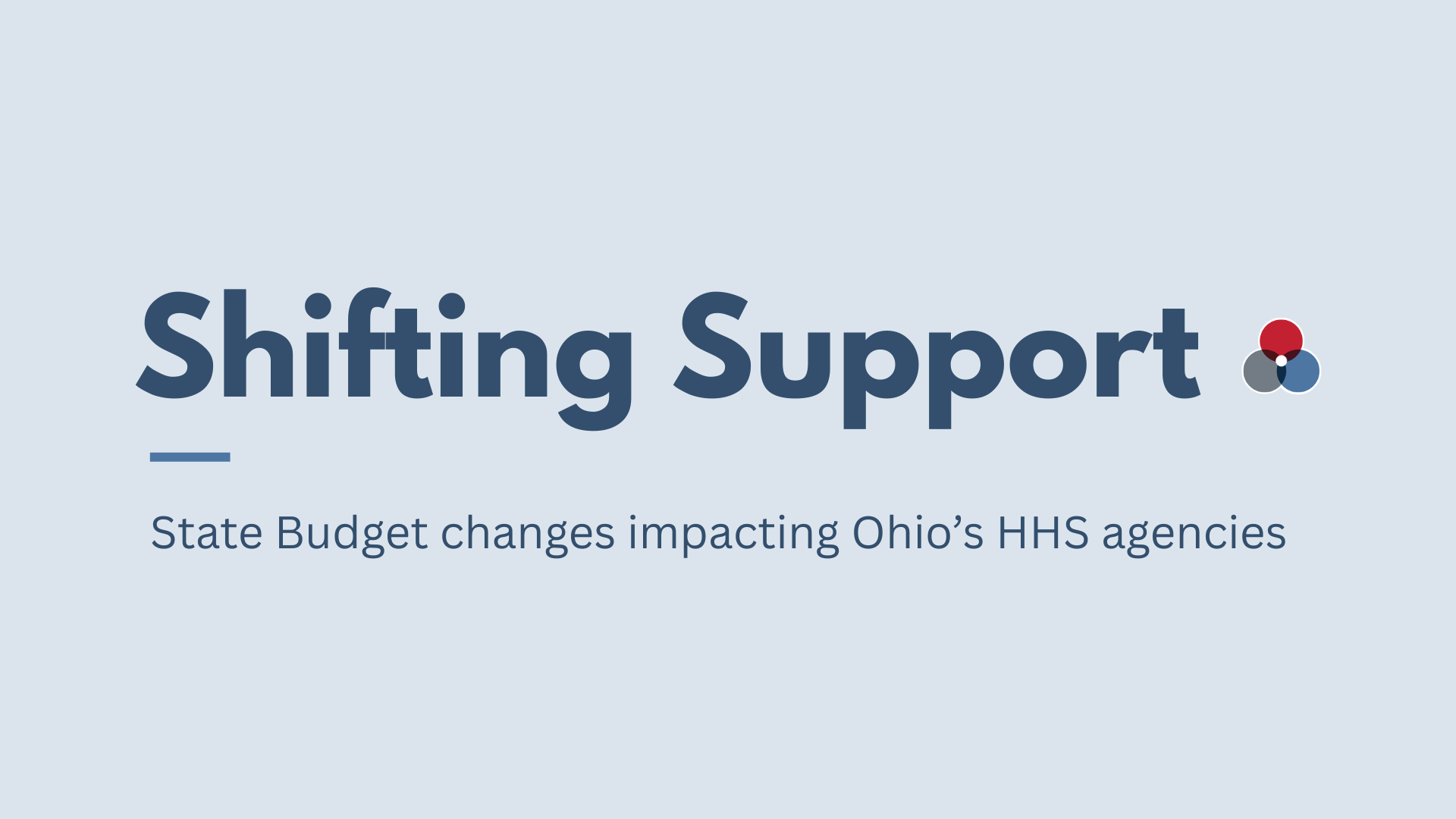Introduction
Since the state last procured, Ohio Medicaid managed care organizations (MCOs) have received more than $86.3 billion in taxpayer funds, representing nearly 47 percent of all spending in the Ohio Medicaid program.[1] As with any private health insurer operating in Ohio, however, at least 85 percent of expenses has to go directly to these companies through a standard known as the Medical Loss Ratio (MLR) That leaves leaving $12.9 billion available for administrative expenses, such as salary, and profit. In exchange for these lucrative contracts with Ohio, MCOs have explicit obligations under state and federal laws that include, ensuring benefits are appropriately administered, costs are contained and state-defined objectives are achieved. It is this last condition, that of achieving value for the state, which is the premise of the State of Ohio’s efforts to rebid the program.
Ohio Medicaid managed care organizations (MCOs) have received more than $86.3 billion in taxpayer funds.
As opposed to a fee-for-service system, wherein the state directly reimburses providers, these insurance companies contract with providers to manage benefits and are enabled with utilization management tools, data analytics and case coordination staff to achieve results on behalf of the state. In other words, as the purchaser of medical services in Medicaid, the state leverages the abilities of these MCOs to innovate, compete and deliver results. In exchange for this service, MCOs are able to earn administrative fees, profit and capture performance incentives. The contract between the state and these organizations, then, represents the basic operational expression of the state’s policy interests in Medicaid.We have previously written about the current contract, known as the provider agreement.[2] At the time, we noted that while a number of programs had achieved some success in value, more could be done to achieve greater value, increase transparency and address social determinants of health. When the state announced it was reprocuring these contracts, we identified opportunities to build on the successes of the program while also addressing some of its notable shortcomings, particularly in the areas of administrative redundancy, coordination with providers and children’s health. After reviewing the initial model provider agreement from the state, it would appear that many of the issues we identified have been contemplated and, what’s more, the state seems to have made population health the priority of the contract’s design.
KEY TAKEAWAYS
- Ohio needs to be more efficient with its resources and it’s time to make sure the state leverages managed care competition to save money
- Ohio needs to do more to promote population health and equity as a way to drive down costs, reduce disparities and improve outcomes, especially for kids
- The procurement is designed to repair a fragmented system of care that has hampered the patient/provider relationship
- Managed care can play a critical role connecting providers and community supports, but the varied and duplicative systems of claims and credentialing cause headaches and add to Ohio’s inefficiency
- Medicaid covers 1 in 3 Ohioans and they should expect more from a program they pay for, especially since it is mostly managed by private companies
Medicaid covers 1 in 3 Ohioans and they should expect more from a program they pay for.
The case for reform: Current performance unexceptional; Children's care significantly lacking
As required by state and federal regulations, MCOs must regularly track and report their performance in a number of areas including consumer and provider satisfaction; financial performance; clinical quality; and population health.[3],[4],[5],[6],[7] Many of these reports are conducted by independent third parties which provide an analysis on performance within Ohio, between Ohio and other MCOs, nationally, and also provide recommendations.In the most recent comprehensive External Quality Review Organization technical report (EQRO), several strengths were identified. Overall, member satisfaction was relatively high compared to national benchmarks in the areas of clinical performance and customer service. This is according to the Consumer Assessment of Healthcare Providers and Systems (CAHPS) survey, which is developed by the Agency for Health Research and Quality (ARHQ) and documents patient experience by directly asking consumers and patients to report on and evaluate their experiences with health plans, providers and health care facilities. MCOs also performed well in regards to administrative compliance, which includes MCOs’ operational requirements in regards to published clinical guidelines; information systems; program integrity (fraud and waste); encounter data completeness (claims) and member information. Additionally, payment error rates were low and, importantly, when compared to one another in Ohio, plans did make progress on quality measures tied to the Pay for Performance (P4P) program and the Comprehensive Primary Care (CPC) program. However, while there are many identified strengths, particularly on the side of the business operations of Ohio’s program, there were a number of opportunities for improvement in each of these areas. Specifically, when compared to national numbers regarding quality, Ohio’s performance was, at best, unexceptional and, specifically, children’s care was significantly lacking.First, consumer issues identified in CAHPS do not provide the full picture:
- Results from the state’s “secret shopper” program show
- Ability to schedule an appointment for routine care was less than 70 percent
- Ability to schedule an appointment as a new patient was around 75 percent
- On average, patients had to wait 27 days for an appointment
- Only 7 in 10 contracted physicians accepted new patients
- Many of the MCOs provider and supplier lists contained inaccurate or missing information
- Only 41 percent of suppliers of durable medical equipment (which includes items like wheelchairs and oxygen, often referred to as “DME”) were listed accurately and often companies that were not actually DME suppliers were listed
- For primary care physicians (PCPs) more than 1 in 4 physicians had the wrong phone number listed
- More than 2 in 3 suppliers had the wrong address listed
And while CAHPS scores for children were relatively high, no MCO was rated in the top tier in regards to coordination. We can see evidence of that in the MCOs lack of achievement in routine care like Early and Periodic Screening, Diagnostic and Treatment (EPSDT) services.
These services, deemed medically necessary, can create a legal risk when states underperform.
EPSDT is the child health component of Medicaid and is known as Healthchek in Ohio. Federal statutes and regulations state that children under age 21 who are enrolled in Medicaid are entitled to EPSDT benefits and that states must cover a broad array of preventive and treatment services like dental services, tests for blood lead levels and vision screenings. Importantly, these services, deemed medically necessary, can create a legal risk when states underperform.[8],[9] When looking at the Healthcare Effectiveness Data and Information Set (HEDIS), which is a widely used set of performance measures in the managed care industry, developed and maintained by the National Committee for Quality Assurance (NCQA):
- Only 52 percent of Ohio children get their Healthcheks completed.
- Fewer than 2 in 3 children get regular vaccinations.
- Fewer than half of children have annual dental appointments.
- Only 60 percent of Medicaid enrolled children have had a blood test reported.[10]
Children, while representing the majority of people served by Medicaid through managed care, are not the only ones who experience challenges with care. According to the state’s evaluations:
- Only two of the 15 measures the state tracks were above the 75th percentile.
- Sixty-six percent of women received postpartum care[11]
- In regards to behavioral health:
- Effective continuation of treatment was only achieved 1 in 3 times
- Thirty-day follow-up for emergency department visits for substance use disorders was achieved 1 in 4 times
- Hospitalizations for mental illness were achieved 2 in 3 times
- Blood pressure control is only achieved around 66 percent of the time
- Ohio is below the 50th percentile in managing diabetes
- Three specific measures were below the national 25th percentile including:
- Use of Multiple Concurrent Antipsychotics in Children and Adolescents
- Comprehensive Diabetes Care—HbA1c Poor Control (>9.0%)
- Adult Body Mass Index (BMI) Assessment[12]
Realizing that many of these issues are deeply intertwined with the medicine delivered by clinicians, their perspectives on Ohio’s current system is a useful level of analysis as well.
In a survey of providers’ experiences with MCOs, 51 percent were not satisfied with their relationships.
In reviewing provider feedback, there are issues regarding credentialing, collaboration and payment. In a survey of providers’ experiences with MCOs, 51 percent were not satisfied with their relationships, 32 percent did not find the prior authorization (PA) process satisfactory, 37 percent felt social needs were not be addressed by the MCOs and 38 percent stated relations were not good. This is consistent with other data on claims that showed nearly 1 in 3 PA request were initially denied (at significantly varied rates between 22 to 39 percent, depending on plan) and more than 69 percent of all complaints regarding plans dealt with payment issues, with the same sort of variance. And, out of the otherwise good performance in the state’s administrative review, credentialing was the lowest scored metric, which is consistent with the feedback collected from ODM’s Request for Information (RFI) process when the procurement was announced in 2019.Indeed, major issues identified by the preponderance of the state’s reports confirm many of the findings from the state in its RFI and outreach process regarding the procurement. In regards to access, individuals highlighted issues with coordination, fragmentation in community partnerships and a lack of access to routine care. In regards to experience, provider rosters were often inaccurate and coordination for complex needs was lacking. Providers and associations underscored these perspectives and highlighted the need to build on value-based models, ensure coordination for multi-system youth and standardize and streamline administrative processes including credentialing, the exchange of beneficiary data and simplified PA.Taken in totality, the current managed care performance ranges from good in specific ways, mediocre in most ways, and deeply concerning for particular populations, most notably children and adolescents. Combined with the concrete measures in the state’s reporting system, the feedback from the public, including that of individuals and organizations regularly engaged with Medicaid, highlighted and confirmed those technical reports, particularly in the areas of administrative complexity, the need for coordination and improving outcomes.
General structure and timeline of reprocurement
The state’s procurement is not a single effort, but an interwoven set of structural reforms executed contractually. In total, procurement should be seen as a set of five efforts. These efforts include a single pharmacy benefit manager; a Prepaid Inpatient Health Plan (PIHP) for youth with complex needs known as OhioRISE or “Resilience through Integrated Systems and Excellence;” a centralized credentialing clearinghouse; a fiscal intermediary to serve as a single point of entry for all provider claims and prior authorization requests; and the procurement of MCOs.[13] While each of these areas provides rich material for analysis, the focus of this paper will be on the “main procurement” of the MCOs as reflected in the state’s model provider agreement. Reference will be made to the other procurements, given their systemic relationship, but in ways that augment or enhance the analysis of the model provider agreement offered by the state.
The focus of this paper will be on the “main procurement” of the MCOs as reflected in the state’s model provider agreement.
For the main procurement, the process is organized into three parts, with an application cycle, an evaluation cycle and execution. For the application, the state will hold conferences for interested parties and request a notification of intent by the end of October of this year. From there, MCOs must submit their applications by November 20 and the state will evaluate proposals. This evaluation consists of reviewing mandatory qualifications per state and federal regulations, reviewing application responses, receiving oral presentations from bidders, then selecting and announcing awardees in January. After the awards are announced, the state has nearly a year to implement, including a critical “readiness review” process with a launch date of January 5, 2022:

Review: How the state is trying to achieve value through equity, collaboration and competition
Relationship to Other ContractorsThe model provider agreement is a 374-page contractual document that is intended to serve as the basis for the relationship between the state and MCOs. It is worthy to note that some key functions, particularly that of credentialing, claims processing and pharmacy benefit management, have been put into separate procurements. While this is a significant change for plans, particularly in terms of direct financial benefit through administrative revenue, it does represent a simplification for beneficiaries and providers dependent on these key business functions. This sort of coordinated design allows the state to create a more transparent and modifiable process for those business functions without needing to duplicate efforts across all potential “main procurement” contractors. However, implementation and the interoperability of these functions is key. If there is an issue regarding a process performed by one contractor versus another, the chain of accountability will need to be understood. If, for example, an OhioRISE enrollee will still have their physical benefits covered by an MCO, but other care management services are covered by the OhioRISE plan, continuity and communication of services are paramount. Noticeably, in the context of the application, the state explicitly and iteratively built in expectations for collaboration between contractors and, in the context of the model agreement, established the state’s ability to test, adapt and ensure the operational integration of the contracts. Of course, this does not guarantee success. But, using the previous example regarding OhioRISE, other states have been successful implementing similar PIHP models. In fact, a 2017 review of Michigan’s behavioral health and intellectual/developmental disability services and supports system showed the state’s specialized PIHP lowered the cost of care for enrollees, improved patient experience and improved outcomes for the population.[14] It is not unreasonable, then, to assume that Ohio’s MCOs can meet, if not outperform, the standards established in other states‘ Medicaid programs.A Population Health FocusMost clear in the model provider agreement is the straightforward focus on population health as a premise of the agreement. Not only is population health embedded as an unambiguous emphasis in the application itself, garnering an outsized share of how the proposal will be evaluated by reviewers, but it incorporates a multitude of supportive elements operationally and in reimbursement design. By doing so, it reflects a very patient-centered approach, leveraging the experiences collected during the RFI process around fragmentation, confusion and concern regarding continuity.
Ohio’s required collaboration with the state, external partners and other contractors and will obligate MCOs to have dedicated staff responsible for implementing population health strategies and programs.
Appendix C outlines the agreement’s efforts to consider both population health and combines it with the previously segregated measures on quality. This alone is significant because quality measures, which are often clinically-oriented, may not reflect the total needs of a population and instead reflect the fidelity of practitioners to follow-though on a process unrelated to an outcome (i.e. performing a screen as opposed to improving a health condition). To support these efforts, Ohio’s required collaboration with the state, external partners and other contractors and will obligate MCOs to have dedicated staff responsible for implementing population health strategies and programs. This builds on the previous agreement’s focus on quality improvement science which, according to the external quality reviews, led to notable improvements in outcomes and delivery of care. This organizational focus must be supported not only with data systems and consumer functions to accommodate needs and evaluate insurance risk, but also with equity and community-based organization involvement. This marks a significant departure from the previous contract which, while inclusive of these concepts, did not establish issues of equity as foundational in operations and organizational infrastructure.Emphasizing Social Determinants and EquityThe proposal makes several tweaks to the agreement which explicitly address the issues of equity and social risk. In regards to equity, a new, mandatory position of Health Equity Director is created. This person must not only leverage the same quality improvement tools used in the population health program and coordinate with the Population Health Director, but he or she will be accountable to ensure racial, ethnic and language data and case management is inclusive and proactively identified to address disparities. This position will also be accountable for ensuring the cultural competence of the organization is improved, ensuring implicit bias training is provided and that trauma-informed care is included in the foundation of the MCO’s clinical approach.From a care management standpoint, equity contemplates the social determinants of health and enables reimbursement of social determinant case management by promoting active referral to and follow-up on needs such as housing, food insecurity, employment, transportation, interpersonal safety and toxic stress. The creation of this position, then, and the contractual elements tied to equity augment the ongoing work of Governor Mike DeWine’s Minority Health Strike Force by institutionalizing a mechanism to address inequity and disparities.
To ensure these connections are made, the state calls out the use, and subsequent reimbursement, of referral platforms.
Further, to ensure these connections are made, the state calls out the use, and subsequent reimbursement, of referral platforms; the sharing of health risk assessments to providers; the engagement of Pathway HUBs and community-based organizations; and the use of Z codes. Z codes, to explain, are a set of billing codes in the International Classification of Diseases (ICD) system that account for a number of social determinants such as education, employment, occupational risk and housing insecurity.[15] This means many emergent software platforms (Aunt Bertha, Healthify, Unite Us, etc.), which integrate clinical case management with closed-loop referrals to community-based organizations like food banks, will be incentivized. While this simple change may seem slight, this sort of diagnostic tool permits clinicians to proactively document, and get paid for addressing, those factors for the first time in the program’s existence. And, with this sort of data available, the state can better analyze relationships between social determinants and outcomes to inform the other policy activities of the state and further control costs in the program and beyond.
It’s important to note that health outcomes are the economic imperative of both payers and providers.
A Mandate for Better CollaborationIt’s important to note that health outcomes are the economic imperative of both payers and providers. As we wrote about in our comments during the request for information process, the data systems of medical providers and of Ohio’s MCOs are largely segregated.[16] Providers and provider systems have clinical data and claims information representing their billing practices. MCOs, on the other hand, have data on the claims they receive between multiple partners which may or may not include accurate or meaningful clinical data. Oftentimes, this leads to fragmentation between these systems, with providers unable to understand their patients’ complete utilization patterns and payers unable to fully document and understand the clinical performance of their contracted partners. Importantly, community-based organizations are typically left out of these systems of delivery, creating significant gaps in what could be a more holistic, accurate approach to care coordination and risk management.To create a more collaborative environment, beyond the requirements to collaborate, MCOs will be directed to participate in Ohio’s Health Information Exchanges (HIEs). An HIE allows doctors, nurses, pharmacists, other health care providers and patients to appropriately access and securely share a patient’s vital medical information electronically.[17] What’s remarkable about this requirement, beyond the obvious power in better and more accurately managing the insurance risk of the MCO and, ultimately, the state, is the overt recognition in the organizational design and regional responsibility accounting for local input when leveraging this data. This includes, but is not limited to the Alcohol, Drug Addiction, and Mental Health (ADAMH) Boards, MCO Member and Family Advisory Councils, Pathway HUBs, community-based organizations (CBOs) and other local government entities that work with common populations. And, as with the previous agreement, MCOs are able to subcontract elements of their care coordination to Care Coordination Entities (CCEs), which means MCOs can defer to CCEs for coordination and have more incentive and ability to do so. For example, MCOs are required to support Comprehensive Maternal Care (CMC) CCEs, meaning there is a clear expectation MCOs work with CBOs to address maternal and infant health. This is a logical evolution of the contract given the evidence regarding the positive impact doulas and other lay, non-institutional providers have on improving outcomes, controlling costs and reducing implicit discrimination and disparities in delivery-related outcomes.[18]Value, Quality and Higher ExpectationsThe model provider agreement carries forward many of the impactful value-based programs put in place during the last contractual cycle. In this model agreement, MCOs have a new, broad authority and flexibility to establish alternative payment models (APM) with providers. The strategies required leave it open-ended in terms of what these models mean, operationally, but point out several areas along the lines of performance, quality, waste reduction and unwarranted price variation. This flexibility does not come without consequence however. If the MCO fails to meet the obligations of its APM, ODM has the discretion to reduce member assignments through its auto-enrollment process and/or invest profits in excess of 1 percent of its profit margin in primary care providers. In other words, if the MCO fails to meet its self-defined expectations, other MCOs will benefit and primary care providers will be better compensated.
If the MCO fails to meet its self-defined expectations, other MCOs will benefit and primary care providers will be better compensated.
While the previous contract focused primarily on specific HEDIS measures, the measurement system tied to quality is expanded with measures from the Health Resources and Services Administration (HRSA), AHRQ and several ODM-defined measures, among others. Remarkably, and in a very creative way, this expansion includes several child-focused measures regarding dental health and educational benchmarks such as kindergarten readiness, graduation rates and third grade reading level. These measures create the potential for data-driven analyses regarding the school-based health center work taking place across the state.[19] Beyond this, there are several quality measures that significantly expanded the potential impact MCOs can have across the population Medicaid serves including HIV viral load suppression, C-Section rates, progesterone usage, medication reconciliation, and customer service ratings via CAHPS. It should be noted, not all of these measures will have some quality-based payment tied to them and, in fact, many require reporting upfront. However, the state built in the ability to change these measures and tie them to risk as a part of the ongoing effort while implementing the agreement.As is the case with the current provider agreement, many measures will qualify for ODM’s quality withhold payment program, which awards MCOs with prorated payment based on how well a measure is achieved. If, however, MCOs are able to excel in a given category, they can earn more than what they would have been paid with a bonus, using the funds from underperforming measures across the program to do so. As before, there are a number of minimum performance standards that MCOs must meet but, when they are not met, each instance of failure can result in a sanction which can escalate over time. These standards build on a number of noncompliance sanctions in Appendix N of the model provider agreement regarding claims, appeals, grievances, coverage, transportation access and more. In fact, EPSDT services have their own noncompliance measure, requiring the MCO to pay $750 per occurrence plus the cost of the service every time they fail to authorize and provide medically necessary services. As such, the state is implementing a policy which attempts to mitigate the risk for litigation tied to failure in achieving adolescent health.
Conclusion
The cyclical nature of state contracting is neither new nor innovative policy territory. Indeed, literature suggests that the value-based purchasing cycle of states should re-contemplate contractors as a natural evolution of the state’s economic interests. [20] In fact, for Medicaid, the typical procurement cycle is three to five years, meaning Ohio’s current agreement is very mature and likely due for revitalization.[21] Currently, there’s a lot to praise in regards to Ohio’s efforts with managed care, particularly as ODM has aggressively and effectively pursued value-based reimbursement in the wake of a fee-for-service system agnostic to the state’s financial risk.
For Medicaid, the typical procurement cycle is three to five years, meaning Ohio’s current agreement is very mature and likely due for revitalization.
This proposal is also very ambitious and fundamentally changes the way the state delivers Medicaid benefits. By segmenting major business functions of the plans into separate contracts, the details around interoperability and coordination must be worked out for the agreement to be effective. Where there was once accountability for all of these business functions within the plans themselves, there is now segmentation. This could lead to confusion and complexity, depending on how these things are executed, which is why the readiness review period will be so critical. However, as the preponderance of evidence from the MCOs’ own reporting shows, more can and should be done.
The billions we spend in taxpayer resources could be better used to force the issues of collaboration, quality and cost control.
In very clear and obvious ways, we could be doing better. Ohio providers, both large and small, face a dizzying set of business requirements and hurdles that add to the administrative expense of the state in the form of managed care’s capitation. We are not achieving the value we could, especially when compared to other states, particularly in the areas of managing chronic disease, addressing social needs and, regrettably, in ensuring children are able to rightfully access medically necessary care. And while MCOs do present the opportunity to leverage the market-based principles of competition and innovation to achieve value, the billions we spend in taxpayer resources could be better used to force the issues of collaboration, quality and cost control. This procurement effort is not disruptive to the people it serves. Instead, this RFA seeks to heal the disruption that the current system has created. Putting people before the business of managed care will go a long way to ensure Ohioans, particularly kids, get a managed care program that is competitive, high quality, easier to use and economically efficient.[1] Ohio Checkbook. (n.d.). Retrieved October 1, 2020, from https://checkbook.ohio.gov/. Data does not include MyCare Ohio Plans nor additional funding for specialized programs or projects.[2] Anthes, L. (2019, April 08). Engineering outcomes: Managed care and value-based design in Ohio Medicaid. Retrieved October 01, 2020, from https://www.communitysolutions.com/research/engineering-outcomes-managed-care-value-based-design-ohio-medicaid/[3] United States, The Ohio Department of Medicaid. (2019). 2019 Ohio Medicaid Managed Care Program Consumer Assessment of Healthcare Providers and Systems Member Experience Survey Executive Summary Report. Health Services Advisory Group. https://medicaid.ohio.gov/Portals/0/Medicaid%20101/QualityStrategy/Measures/CAHPS/2019-MCP-CAHPS-Executive-Summary-Report.pdf[4] United States, The Ohio Department of Medicaid. (2019). Office of Managed Care Medicaid Consumer Dashboard Q1 2019. https://medicaid.ohio.gov/Portals/0/Providers/ProviderTypes/Managed%20Care/Dashboard/2019/MMC-ConsumerQ1.pdf[5] United States, The Ohio Department of Medicaid. (2019). Office of Managed Care Medicaid Provider Dashboard Q1 2019. https://medicaid.ohio.gov/Portals/0/Providers/ProviderTypes/Managed%20Care/Dashboard/2019/MMC-ProviderQ1.pdf?ver=2019-09-16-103807-650[6] United States, The Ohio Department of Medicaid. (2019). State Fiscal Year 2019 Annual External Quality Review Organization Technical Report. QSource. https://medicaid.ohio.gov/Portals/0/Medicaid%20101/QualityStrategy/Measures/SFY-2019-External-Quality-Review-Technical-Report.pdf[7] United States, The Ohio Department of Medicaid. (2019). HEDIS 2019 Aggregate Report for The Ohio Medicaid Managed Care Program. Health Services Advisory Group. https://medicaid.ohio.gov/Portals/0/Medicaid%20101/QualityStrategy/Measures/OH-SFY2019_HEDIS_Aggregate_Report.pdf[8] Perkins, J. (2018, November 09). Update on EPSDT Litigation Trends. Retrieved October 02, 2020, from https://healthlaw.org/resource/update-on-epsdt-litigation-trends/[9] Frantz, S. (2009, November 10). Judge grants motion to allow additional plaintiffs in EPSDT case. Retrieved October 05, 2020, from https://www.ablelaw.org/media-room/news-and-press-releases/2009-news-archive-getinformation-1196/2189-judge-grants-motion-to-allow-additional-plaintiffs-in-epsdt-case[10] United States, The Ohio Department of Medicaid. (2019) Annual Report. https://medicaid.ohio.gov/Portals/0/Resources/Reports/Annual/ODM-Annual-Report-SFY19.pdf[11] Britton, T. (2019, March 22). Governor's budget makes effort to address high infant mortality rate, more work needed on Ohio's maternal mortality rate. Retrieved October 02, 2020, from https://www.communitysolutions.com/continued-efforts-address-ohios-high-rate-infant-mortality-included-governors-budget-work-needed-understand-maternal-mortality-state/[12] Ibid., 6[13] Ohio Medicaid Managed Care. (2020, September 30). Retrieved October 01, 2020, from https://managedcare.medicaid.ohio.gov/[14] Michigan Association of Community Mental Health Boards: Center for Healthcare Research and Innovation. (2017, March). Bending the Healthcare Cost Curve: The success of Michigan’s public mental health system in achieving sustainable healthcare cost control. Retrieved October, 2020, from https://www.crainsdetroit.com/assets/PDF/CD109536321.PDF[15] Miliard, M. (2019, October 22). New tool helps promote ICD-10 codes for social determinants of health data. Retrieved October 02, 2020, from https://www.healthcareitnews.com/news/new-tool-helps-promote-icd-10-codes-social-determinants-health-data[16] Ibid. 2[17] What is HIE? (2020, July 24). Retrieved October 03, 2020, from https://www.healthit.gov/topic/health-it-and-health-information-exchange-basics/what-hie[18] Bahadur, N. (2020, September 14). How Black doulas are fighting the maternal mortality crisis. Retrieved October 03, 2020, from https://www.cbsnews.com/news/doulas-black-maternal-mortality-rate-crisis/[19] Anthes, L. (2019, May 21). Making the Grade: Education and Medicaid in Ohio and Beyond. Retrieved October 03, 2020, from https://www.communitysolutions.com/research/making-grade-education-medicaid-ohio-beyond/[20] Zemel, S., Alberts, C., Weiss, A., & Kaye, N. (2016, April). Managing Medicaid Managed Care: New State Strategies to Promote Accountability and Performance. Retrieved October 1, 2020, from https://www.nashp.org/wp-content/uploads/2016/04/MCO-Brief.pdf[21] State MCO Contract Amendments. (2019, November 06). Retrieved October 04, 2020, from https://coveragetoolkit.org/medicaid-mcos/medicaid-mco-contracting/state-mco-contract-amendments/







